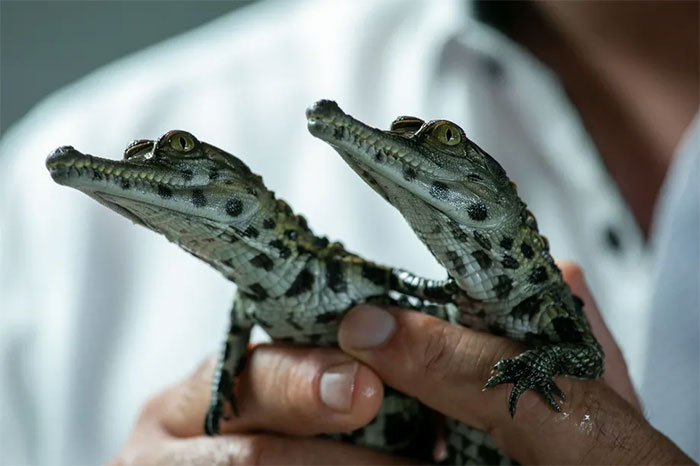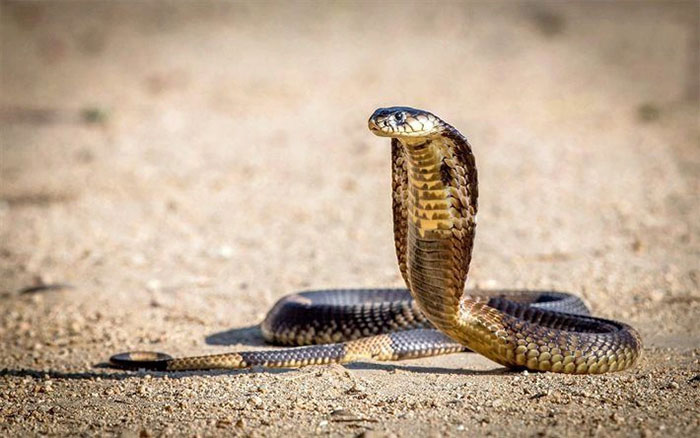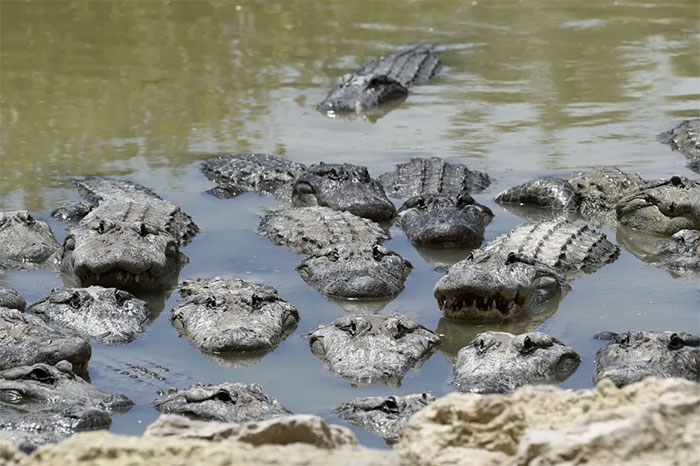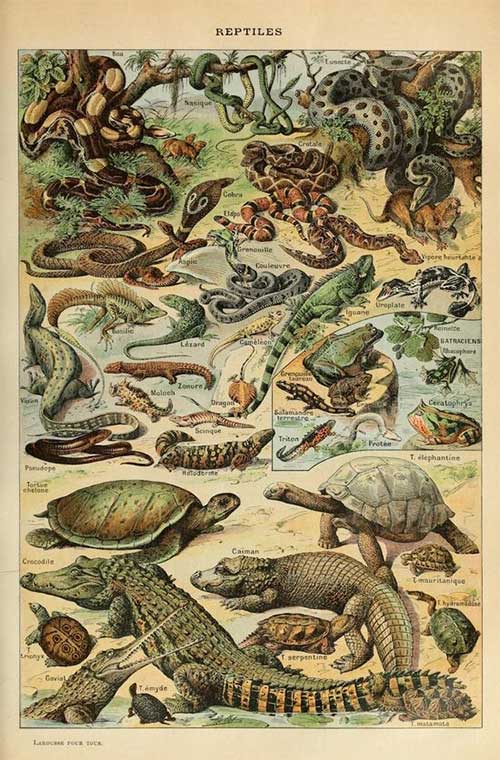A recent study published in the journal Nature has raised alarming concerns among a group of international wildlife conservationists. According to their findings, up to 1 in 5 reptile species, including crocodiles and snakes, are being neglected by wildlife conservation programs to the point of being threatened with extinction.
The reason behind this is the lack of public interest in these reptiles; they are often seen as unattractive and dangerous, leading to minimal public sympathy. This results in significant challenges in securing funding for research and conservation activities focused on reptiles.
As a consequence, more than 1,800 species have been listed as threatened with extinction, with 31 species disappearing permanently. Scientists suspect that some snake and crocodile species may have gone extinct even before humans became aware of their existence.
Ironically, this alarming situation has been highlighted too late. The researchers’ study has faced multiple delays, with the statistical work extending over 15 years due to funding shortages.

Up to 1 in 5 reptile species, including crocodiles and snakes, are at risk of extinction.
However, better late than never, scientists have proposed several solutions to address this issue. They emphasize that despite their unappealing appearance, reptiles are essential animals that need protection due to their crucial role in the ecosystem.
Reptiles Considered Unattractive
While you may be sitting comfortably at home, petting your cat on a cold, rainy day, crocodiles can only wish for such a life. Unfortunately, they are cold-blooded reptiles lacking the soft fur of cats, instead possessing rough and scaly skin.
Crocodiles appear both frightening and repulsive in our eyes. Stories, cartoons, and circus acts often portray crocodiles as villains. In real life, crocodiles do attack and bite humans. Consequently, most people are more comfortable with the notion of turning them into wallets and handbags rather than considering them for conservation.
A similar story applies to snakes. Snakes are often at the top of the list of human phobias. You might not fear heights, sharp objects, or public speaking, but perhaps you do fear snakes.
Thus, if an animal charity organization were to come to your home and ask for a $1 donation for snake conservation, the question you would likely ask is, “Why? Why should we conserve such a scary creature? I don’t want snakes slithering into my home. If I find a snake in my garden, I will kill it to protect my children.”
And this is how humans have placed the Indian and Southeast Asian cobra on the list of endangered species.
“Cobras are truly an iconic snake in Asia. It’s a shame that even popular reptiles like cobras are experiencing declines,” said Neil Cox, director of the International Union for Conservation of Nature (IUCN) Biodiversity Assessment Unit.

Cobras have been listed as a threatened reptile species.
Cobras are certainly not the only reptiles being neglected. In his study, Cox surveyed a total of 10,196 reptile species to assess them using criteria from the IUCN Red List.
The results revealed that at least 1,829 species, or 21%, fall into categories of vulnerable, endangered, or critically endangered. Crocodile subspecies are the most threatened group, with 58% of crocodile species found in this category.
“This is a consequence of abuse and overexploitation,” Cox stated. He noted that crocodiles have traditionally been killed for their meat and skin. People also do not want crocodiles in their settlements, leading to their active removal.
Snakes are often killed in agricultural areas. Logging and urban development are also considered significant threats to the survival of terrestrial reptiles.
Meanwhile, aquatic species are affected by human sand extraction activities. Many reptiles require sand for nesting. Humans have taken away their sandbanks for glass, cement, and runways…
Up to 90% of the threats to reptiles’ survival come from human activities, with climate change accounting for only 10%. Furthermore, when comparing reptiles to birds or mammals facing similar threats, Cox found that reptiles consistently face a higher risk of extinction.

Aquatic species are affected by human sand extraction activities.
“For many people, reptiles lack appeal,” he said. “Humans do not like living near reptiles because they can be dangerous.”
Understanding the Importance of Reptiles in Ecosystems
Long before humans appeared on Earth millions of years ago, reptiles were the true rulers of the planet. The earliest ancient reptiles emerged in coniferous rainforests around 312 million years ago. As we know today, dinosaurs are also classified as reptiles.
Despite many reptile species going extinct in the past, this group of animals remains the most populous terrestrial vertebrates today. They play a significant role in ecosystems and are an essential part of the food chain on the planet.

Most reptiles are carnivorous.
Most reptiles are carnivorous, so they play a role in controlling other species that are their prey. For example, some cobra species in India help control disease-carrying rodent populations.
The presence of cobras—even in urban centers—can help reduce disease outbreaks, and their benefits may outweigh their dangers.
Some reptiles, like lizards, can help control pest insect populations. Meanwhile, crocodiles and alligators help manage fish populations in coastal and wetland areas. We need crocodiles to maintain the health of aquatic ecosystems, allowing aquatic and marine life to thrive.
Conversely, reptiles also serve as prey for other animals. Their eggs and young are often hunted by large fish, birds, bears, and big cats. Even adult crocodiles can fall prey to leopards, tigers, and lions.
Some herbivorous reptiles even help disperse seeds and pollinate plants. Scavenging reptiles play a role in cleaning the environment, thus limiting the spread of pathogens from dead animals.
With their flexible position in the food chain, reptiles not only help control and reduce the populations of certain species but also support the flourishing of many others.
For humans, reptiles like snakes or crocodiles are often viewed as dangerous animals. They occasionally kill people. However, few realize that reptiles can also save many lives.
For instance, scientists have used snake venom to develop medications for high blood pressure, heart failure, and heart attacks. The venom of the Komodo dragon has anticoagulant properties that could be used to treat strokes or pulmonary embolisms.
How Can We Conserve Reptiles?
In their study, Cox and colleagues highlighted a silver lining. Although the number of genuine reptile conservation programs is quite limited, reptiles still benefit indirectly from conservation efforts aimed at mammals, birds, and amphibians.
This is because general conservation activities help preserve the shared habitats of various species. Many amphibians are also prey for reptiles, so conserving them also protects the food sources of these creatures.

Reptiles benefit from conservation efforts aimed at mammals.
“If you have programs or projects aimed at conserving birds, mammals, and amphibians in a location where they coexist, you are also simultaneously protecting many reptile species there, even if the impact is incidental,” said Bruce Young, a co-author of the study.
In reality, if wildlife conservation agencies and national governments paid more attention to reptiles, efforts to protect them could successfully reverse the damages we have caused.
For instance, about 50 years ago, alligator hunters nearly wiped out this native species from the southeastern states of the United States. However, by 1967, when the government banned alligator hunting, the population of this reptile began to recover to the extent that some states in the U.S. now consider alligators a nuisance. They had to establish a hotline for residents to call whenever alligators encroach on their yards or homes.
Yet, amid these contrasting trends, the research conducted by Cox and colleagues emphasizes one crucial point: our mindset regarding reptiles needs to change. We need to adopt a more equitable perspective in the conservation efforts of these creatures.
It is not simply because they are perceived as ugly that reptiles do not play significant roles in the health of ecosystems and our own well-being. In fact, reptiles represent a large branch on the tree of life, and they deserve to be protected just as we protect other species.


















































